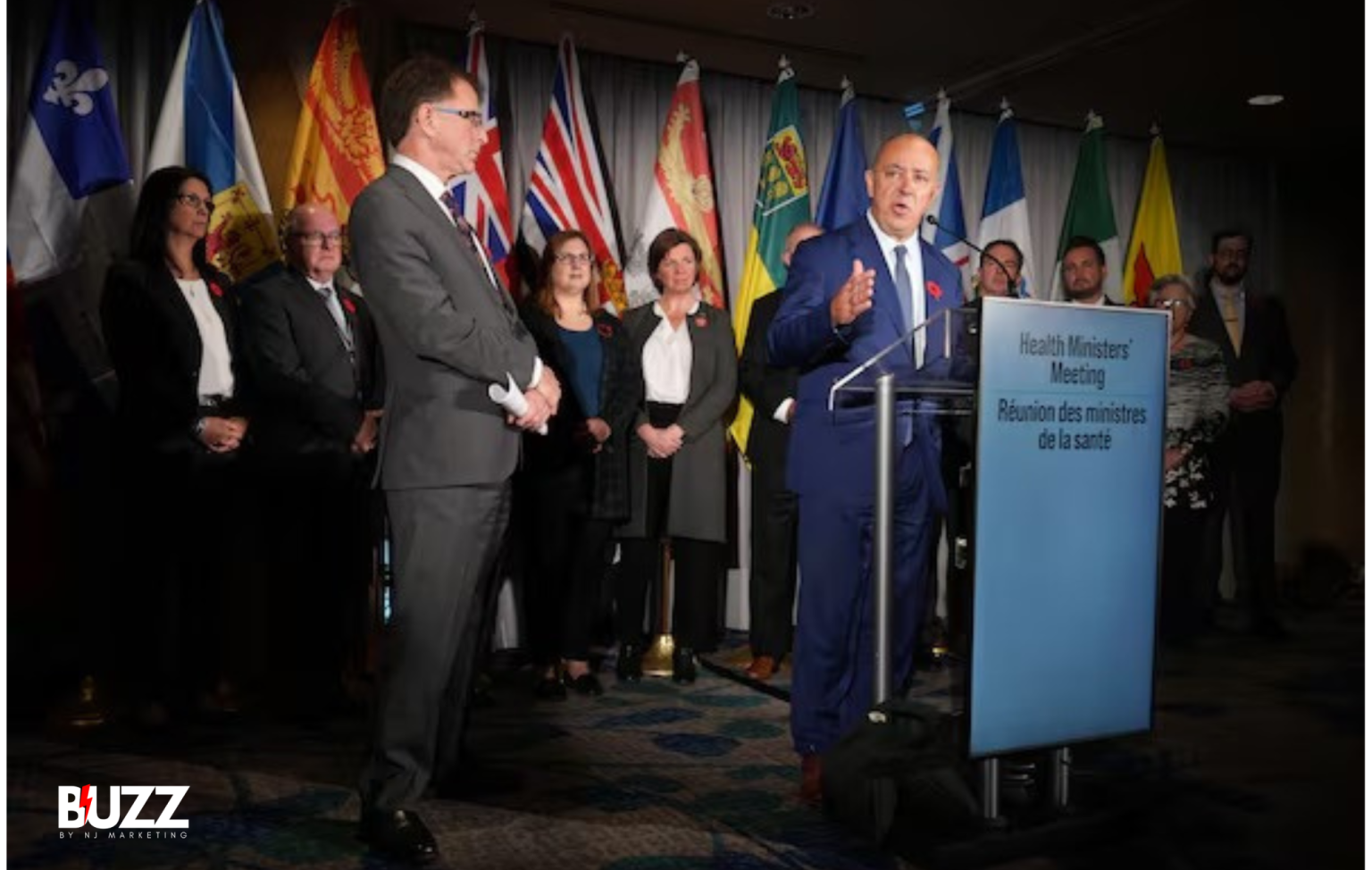On October 16–17, 2025, Canada’s health ministers convened in Calgary for two days of discussions that affect everyone who uses the health system, from seniors to students. Federal and provincial leaders met with the federal-provincial health ministers to talk about issues like funding, workforce shortages, mental health, immunization programs, and how to improve health care coordination between provinces.
This article outlines what the public should watch next, explains the stakes, and breaks down the meeting in simple terms.
Quick Snapshot | The Meeting At A Glance
- When: October 16–17, 2025.
- Where: Calgary, Alberta.
- Who co-chaired: Federal Health Minister Marjorie Michel and Alberta Health Minister Adriana LaGrange.

- Main topics: funding agreements, workforce and credential recognition, mental health and addictions, vaccination programs, data sharing, and rural/Indigenous health needs.
Why This Meeting Matters
- It’s where federal priorities (national standards, funding envelopes) meet provincial realities (hospitals, hiring, local services).
- Decisions or commitments here can change how long patients wait, how many services are available locally, and whether provinces get extra money or flexibility to run programs.
Key Items On The Agenda
Health funding & transfers
- Provinces want predictable, longer-term funding.
- Ottawa is balancing budgets and national accountability.
- Expect talk of bilateral deals (province-by-province) instead of a single one-size-fits-all package.
Workforce shortages & interprovincial credentialing
- How to recognize health worker credentials across provinces so nurses and doctors can move and fill gaps faster.
- Strategies to retain staff and reduce burnout.
Mental health & addictions
- Ministers discussed coordinated approaches, investments, and integrated community care.
- Pressure from nursing and medical associations to act on workplace safety and staffing.
Vaccination and public health coordination
- How federal and provincial systems will prepare for outbreaks and vaccination rollouts.
Rural, remote and Indigenous health
- Targeted strategies for remote communities and Indigenous-led health services remain a priority.
What Each Side Wants
Provinces/territories
- More stable, long-term funding.
- Less red tape, fewer “strings attached” to money.
- Flexibility to run programs that fit local needs.
Federal government
- National standards and coordination for priorities like vaccination and mental health.
- Accountability and measurable outcomes tied to funding.
Potential Wins And Likely Outcomes
Possible positives
- Short-term top-up funding for provinces struggling with hospital backlogs.
- New or accelerated measures for interprovincial credential recognition.
- Joint commitments on mental health initiatives and worker safety.
What could fail
- No binding multi-year funding commitments.
- Provinces rejecting federally imposed conditions.
- Slow implementation that leaves patients waiting for improvements.
Real-Life Impacts – What Citizens May Notice
- Shorter or longer wait times depending on whether funding and staffing improvements are agreed and implemented.
- Local program changes: provinces may expand services (e.g., mental health clinics) or shift funding within their health budgets.
- Regional fairness: if provinces get different deals, access can vary by province or region.
- Workforce effects: improved credential recognition could speed up hiring from other provinces or abroad.
Three Big Challenges The Ministers Face
Politics & timing
Election cycles and changing governments make multi-year plans fragile.
Money vs. accountability
Provinces want money with freedom; Ottawa wants measurable outcomes.
Implementation
Agreements are only useful if follow-up funding and systems turn promises into clinic doors and staffed hospitals.
Lessons From Past Meetings
Past federal-provincial health talks often produce:
- Bilateral agreements instead of a single national deal.
- Short-term fixes that buy time but don’t solve structural problems.
- Successful outcomes occurred when measurable targets and clear follow-up timelines were included.
What To Watch Next – Practical Checklist For Readers
Watch for the official post-meeting communique or press conference summary from Health Canada, which spells out commitments.
Look for:
- Exact dollar amounts and whether funds are multi-year.
- Any new programs to speed credential recognition.
- Timelines for mental health and workforce initiatives.
Contact your provincial health minister or local representative if you want local priorities reflected in provincial asks.
Why You Should Care
When federal and provincial health ministers meet, the result affects hospital staffing, wait times, mental health access, and how provinces spend their health dollars.
These meetings are where national goals are negotiated into local action, and what gets agreed could change the everyday health experience for millions of Canadians.
Don’t Miss Out Our Blog Post: Best Omega-3 Supplements to Boost Heart Health in 2025


